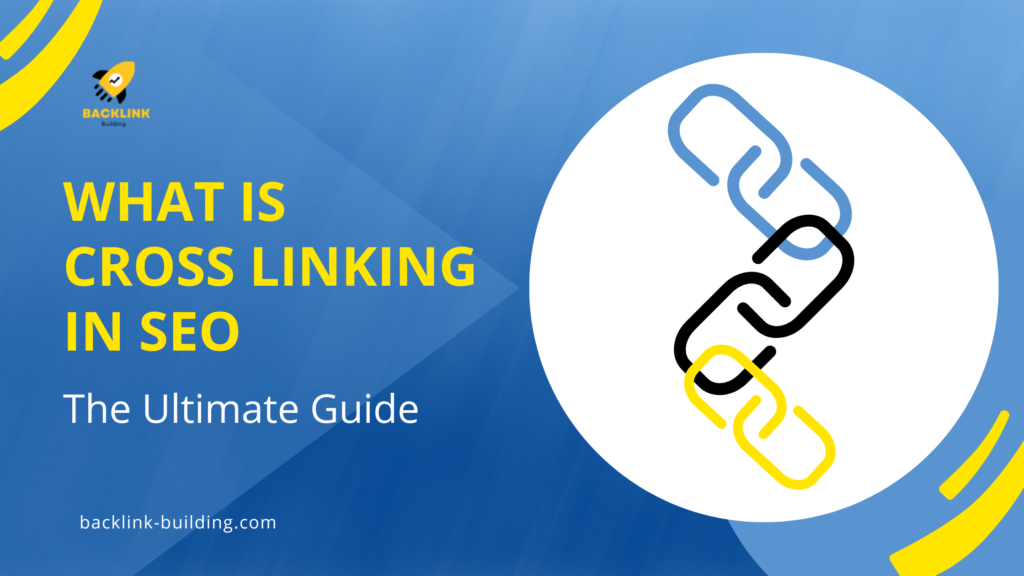
Search engine optimization (SEO) uses numerous strategies and techniques to enhance a website’s visibility and ranking on search engine results pages (SERPs).
One such powerful yet often overlooked method is cross-linking. Cross-linking involves strategically linking different pages within a website to each other, which enhances user navigation and boosts SEO by establishing connections between related content.
This guide delves deep into cross linking in seo, why it’s essential, and how to effectively implement it to maximize your SEO efforts and improve your site’s rankings.
What Is Cross Linking In SEO?
Cross linking in SEO refers to linking pages within the same website. It helps improve site navigation, user experience, and the distribution of page authority.
By connecting related content, it assists search engines in understanding the site’s structure and relevance. Cross-linking can enhance keyword rankings by associating targeted anchor text with critical pages.
It also helps spread link equity, boosting the overall SEO value. Proper cross-linking ensures deeper pages get indexed and found.
It reduces bounce rates by encouraging users to explore more content. Ultimately, cross-linking contributes to a more cohesive and effective SEO strategy.
Types Of Cross Linking In SEO
In SEO (Search Engine Optimization), cross-linking refers to linking between different pages or websites to improve their visibility in search engine results. Here are five types of cross-linking strategies used in SEO:
- Internal Linking:
Internal linking involves linking from one page on a domain to another page on the same domain. It helps search engines discover and index new pages on your site, establishes an information hierarchy, and distributes page authority.
Effective internal linking can also improve user navigation and encourage visitors to spend more time on your site. - External Linking:
External linking (outbound linking) involves linking from your website to other websites. When done judiciously, external linking can enhance the credibility and authority of your content.
It also helps search engines understand the context of your content and can potentially lead to reciprocal linking (when other sites link back to yours), improving your site’s authority. - Reciprocal Linking:
Reciprocal linking involves an agreement between two websites to link to each other. While this practice was more prevalent in the early days of SEO, it is still used to some extent.
Ensuring that reciprocal links are relevant and from trusted sources is essential. Excessive reciprocal linking can be seen as manipulative and may result in penalties from search engines. - Breadcrumb Navigation:
Breadcrumb navigation provides users with a hierarchical navigation trail that typically appears horizontally across the top of a web page.
Breadcrumbs help users understand their location within the site’s structure and can also enhance internal linking by providing contextual links to higher-level pages.
This improves user experience and can benefit SEO by reinforcing internal linking strategies. - Co-Citation and Co-Occurrence:
Co-citation occurs when two different websites mention the same third-party website or page. Search engines may interpret this as a signal of relatedness between the linked sites.
Conversely, co-occurrence refers to instances where two websites are mentioned together without a direct hyperlink.
Both co-citation and co-occurrence can contribute to establishing semantic relationships between websites and influence search engine rankings.
Importance Of Cross Linking In SEO
Cross linking is a critical aspect of SEO for several reasons:
- Improved Crawling and Indexing: Search engines use bots to index web pages. Cross-linking ensures that all vital pages on your site are discovered and indexed by search engines, improving your site’s visibility.
- Enhanced User Experience: Effective cross-linking improves site navigation, making it easier for users to find related content. This can reduce bounce rates and increase users’ time on your site, which are positive signals to search engines.
- Page Authority Distribution: Cross-linking helps distribute page authority (or “link juice”) across different pages on your site. Search engines often consider pages that receive more internal links more critical.
- Keyword Relevance: Using relevant anchor text in cross-links can signal to search engines what a page is about, thereby improving its relevance for specific keywords.
Common Mistakes To Avoid
While cross linking is a valuable SEO strategy, there are common pitfalls to avoid:
- Over-Optimization: Stuffing your content with excessive links or using keyword-rich anchor text unnaturally can lead to search engine penalties.
- Irrelevant Links: Linking to unrelated content can confuse users and search engines, hurting your SEO efforts.
- Neglecting Mobile Users: Ensure your cross linking strategy is mobile-friendly. Mobile users should have the same seamless experience as desktop users.
- Ignoring Analytics: Failing to track and analyze your cross-linking strategy’s impact means missing improvement opportunities.
- Not Updating Links: As your site evolves, regularly update your links to keep them relevant and functional.
The Future Of Cross Linking In SEO
As search engines continue to evolve, the importance of cross linking in SEO is likely to grow. With advancements in machine learning and natural language processing, search engines are becoming better at understanding the context and relevance of content.
Effective cross-linking will play a crucial role in helping search engines make these connections, reinforcing the importance of a well-structured and user-focused linking strategy.
As user experience becomes an increasingly important ranking factor, the ability to guide users through a seamless and informative journey on your website will be paramount. Cross-linking correctly enhances SEO and user satisfaction, making it an indispensable tool in any digital marketer’s arsenal.
FAQ’S
What Is A Cross Link On A Website?
Ans: A cross-link on a website refers to a hyperlink that connects one web page to another within the same domain. It helps users navigate between related content seamlessly.
Cross-links benefit SEO by improving site structure and user experience by directing traffic to relevant pages. They also contribute to a website’s overall connectivity and accessibility.
Conclusion
Cross-linking is a powerful yet often underutilized strategy in SEO. Creating a well-structured network of internal and external links can significantly improve your website’s crawlability, indexing, user experience, and overall search engine ranking.
Remember to use descriptive anchor text, maintain a logical link structure, ensure relevance, and regularly update your links.
By following best practices and avoiding common pitfalls, you can harness the full potential of cross-linking to elevate your SEO game.
In the ever-evolving landscape of SEO, staying ahead requires continuous learning and adaptation. Implementing a robust cross-linking strategy is a step in the right direction, positioning your website for greater visibility and success in search engine rankings.
Now that you know all about Cross linking in SEO, you’re ready to start Cross linking like a pro! Just remember to cross-link sparingly and only with websites that are relevant to yours.
If you do that, you’ll be on your way to a higher ranking and more visibility soon!
If you have any questions, please leave them in the comment sections. We will be happy to answer them.
Thanks for reading:)


